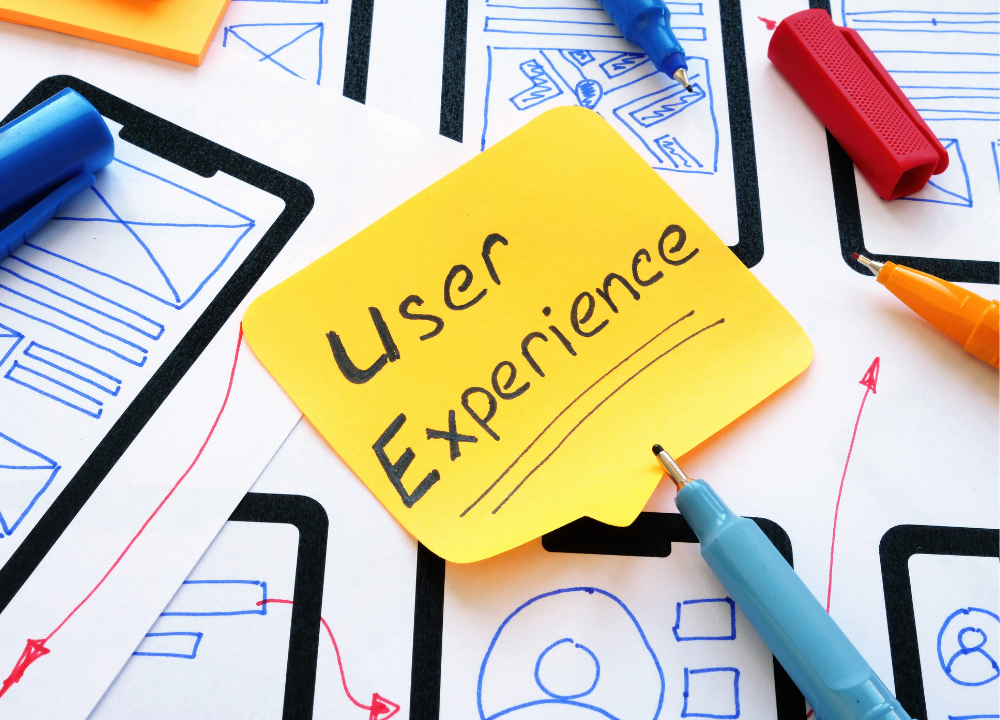How to Craft Innovative and Unique UX Designs for Indian Audiences

- What is User Experience (UX) Design, and How is It Different From User Interface (UI) Design?
- What are the Key Principles of Effective UX Design?
- How Can User Experience Design Enhance User Satisfaction?
- What are User Experience Design Best Practices for Successful Product Development?
- How Does User-Centric Design Impact Product Success?
- How Can Product Managers Boost Conversion Through UX Design?
- Boost Your Product Design Career With Emeritus
Keeping customers engaged and happy over the long term can be challenging but some companies have excelled at it. Apple is a perfect example of this. The over-four-decade-old tech giant continues to exert a massive influence on its customers. Much of Apple’s success can be attributed to the way it treats its customers. Moreover, the key to their success, clearly, has been their inherent understanding of the importance of user experience design. The importance of a user-centric approach, then, cannot be overstated. In this article, we dive into what is user experience design and why UI UX design matters in ensuring that a product is successful.
In this blog, we look at:
- What is User Experience (UX) design, and how is it different from User Interface (UI) design?
- What are the key principles of effective UX design?
- How can user experience design enhance user satisfaction?
- What are some user experience design best practices for successful product development?
- How does user-centric design impact product success?
- How can product managers boost conversion through UX design?
What is User Experience (UX) Design, and How is It Different From User Interface (UI) Design?
 Simply put, user experience design is the process of creating products and services that optimize customer satisfaction and enjoyment of a product or a device. UX design, therefore, focuses on improving the user’s overall experience by enhancing a product’s usability and accessibility. On the other hand, User Interface (UI) design focuses on the visual and interactive elements of a product’s interface. It is concerned with the product’s look, feel, and layout. Although UI and UX design are closely related, they are distinct disciplines in the field of product development. However, both are important because they focus on enhancing customer interaction with a product.
Simply put, user experience design is the process of creating products and services that optimize customer satisfaction and enjoyment of a product or a device. UX design, therefore, focuses on improving the user’s overall experience by enhancing a product’s usability and accessibility. On the other hand, User Interface (UI) design focuses on the visual and interactive elements of a product’s interface. It is concerned with the product’s look, feel, and layout. Although UI and UX design are closely related, they are distinct disciplines in the field of product development. However, both are important because they focus on enhancing customer interaction with a product.
ALSO READ: Benefits of Choosing the Right Product Design Management Course
What are the Key Principles of Effective UX Design?
Although UX design is an evolving field, the fundamental UX design principles remain the same. The most important ones are given below:
1. Accessibility
Accessibility refers to the extent to which users can understand and interact with a product irrespective of their level of vision, hearing, cognition, or physical movement. According to a World Health Organization (WHO) report, 15% of the world’s population lives with some form of disability. Therefore, designing with accessibility ensures that the physical, visual, auditory, and cognitive needs of people with disabilities are fulfilled. In order to satisfy this principle, companies must stick to the World Wide Web Consortium’s Web Content Accessibility Guidelines (WCAG) 2. WCAG 2 consists of recommendations regarding text and images in online content, which companies can use to create an accessible product.
2. Giving Users Control
One of the principles mentioned by Jakob Nielsen, the Danish web consultant often referred to as the “king of usability”, believed that good user experience design means users have the ability to control their actions. According to him, this helps foster a sense of freedom and confidence in them.
3. Adopting a Visual Hierarchy
Visual hierarchy is attributed as one of the main principles of visual design because it guides the user to the most important element of the product. It is a fundamental user experience design principle that involves organizing elements logically and strategically to highlight their importance. By arranging elements in this way, designers shape how users perceive the content and guide them toward specific actions. Additionally, it helps users understand the product better and improves its usability. Product teams use design principles such as scale, color, and contrast to highlight this key element.
4. Being Consistent
Humans like familiarity, so companies should have a consistent UX design with similar patterns and elements for all their products. This further helps in improving usability and learnability; that is, users have existing knowledge of how to use the product.
5. Focusing on the User
There is no UX without users, so putting them at the forefront is important. Product teams must adopt a user-centric design process, where the first step is to understand what the audience wants. After all, what is UX design if it isn’t all about the consumer?
How Can User Experience Design Enhance User Satisfaction?
 As mentioned above, user experience design is a human-centric design approach that prioritizes the needs and preferences of the audience. Let’s, therefore, look at how UX design improves customer satisfaction:
As mentioned above, user experience design is a human-centric design approach that prioritizes the needs and preferences of the audience. Let’s, therefore, look at how UX design improves customer satisfaction:
- The first step of UX design is to conduct user research to understand the target audience’s needs, preferences, and pain points. This insight can be used to create products that resonate with users and foster loyalty.
- UX designers craft unique product experiences with intuitive layouts, clear visual hierarchy, and well-designed interactions that lead to a seamless user experience. This, in turn, will reduce frustration and improve user satisfaction.
- Additionally, this design ensures consistency in visual elements throughout the product. Doing so can help users quickly understand how to use the product, increasing ease of use and satisfaction.
ALSO WATCH: How to Excel as a Product Manager and the Career Path
What are User Experience Design Best Practices for Successful Product Development?
1. Stick to UX Design Principles
UX design principles are the fundamental rules and regulations that product teams can implement in their product design process. So, designers should ideally stick to these principles while developing a product because they have been working for companies across the globe for years. Furthermore, they are tried and tested to yield the desired results.
The current UX design best practices are inspired by the works of Jakob Nielsen and continue to stay relevant even after three decades.
2. Use the Power of Storytelling
In the UX landscape, storytelling helps build a stronger connection with the audience. Especially stories that solve the users’ problems. When creating a story around a product, keep these things in mind:
- Purpose
- Buyer personas
- Users’ pain points
- A solution to customer problems
3. Practice Answering Why
UI designers frequently need to present their work and explain their design decisions. Therefore, one must be capable of explaining the whys behind their work. Therefore, when creating a UX strategy, practice answering that particular question. Point out some published usability research or design projects to be more effective.
ALSO READ: 12 Examples of the Best Packaging Design That Worked Well With Indian Products
How Does User-Centric Design Impact Product Success?
To understand what is UX design thoroughly, it is important to also focus on its influence over the success or failure of a product. A user-centric product design approach enables businesses to create products that align with their users’ needs. For instance, users are more likely to buy products that address their requirements or help solve problems. This, in turn, translates into more sales. A customer-centric design approach also increases user satisfaction and fosters loyalty and trust.
Furthermore, this kind of design approach saves on development costs by catching issues early. Moreover, by involving users, businesses can find out what works and what doesn’t quickly, leading to fewer iterations later.
How Can Product Managers Boost Conversion Through UX Design?
There are a lot of factors that influence conversion rates, and user experience design is one of them. Product managers can use a few UX design strategies to boost conversion.
1. Choose a Minimalist and Clean Design
The rise of minimalism is evident in the product designs we see today. Those with a clean design and easy-to-understand text are more likely to resonate with users. Therefore, product managers need to design a clutter-free product that has a simple design and prioritizes functionality. Furthermore, a minimalist design helps users stay focused on the content of the product.
2. Provide Personalization Using AI- and ML-Driven Solutions
In today’s dynamic business environment, personalization is becoming increasingly crucial. In the case of UI UX design, product teams can personalize the content of the product to deliver tailored experiences. Artificial Intelligence (AI) and Machine Learning (ML) tools and technologies can leverage data about user behavior to personalize content.
3. Micro-Interaction and Engaging Animations
Micro-interactions are brief moments where the user and design interact. Well-designed micro-interactions can enhance the user experience. Similarly, engaging animations enhance the user experience. They offer instant feedback and add a quirky element to the product. By incorporating these design elements, companies can make their products more interactive and enjoyable, boosting user engagement and conversion rates.
ALSO READ: How are the Best Product Design Courses Shaping the Future of the Industry
Boost Your Product Design Career With Emeritus
Designing a product today has a lot to do with knowing the customer and putting them at the center of design decisions. Therefore, learning how to do this is necessary to succeed as a product designer. You don’t have to look far to get the needed knowledge and skills. Emeritus has an array of product management courses that will help aspirants develop an empathy-driven mindset, a deeper understanding of business objectives, and the ability to design simple, productive, and compelling products.







